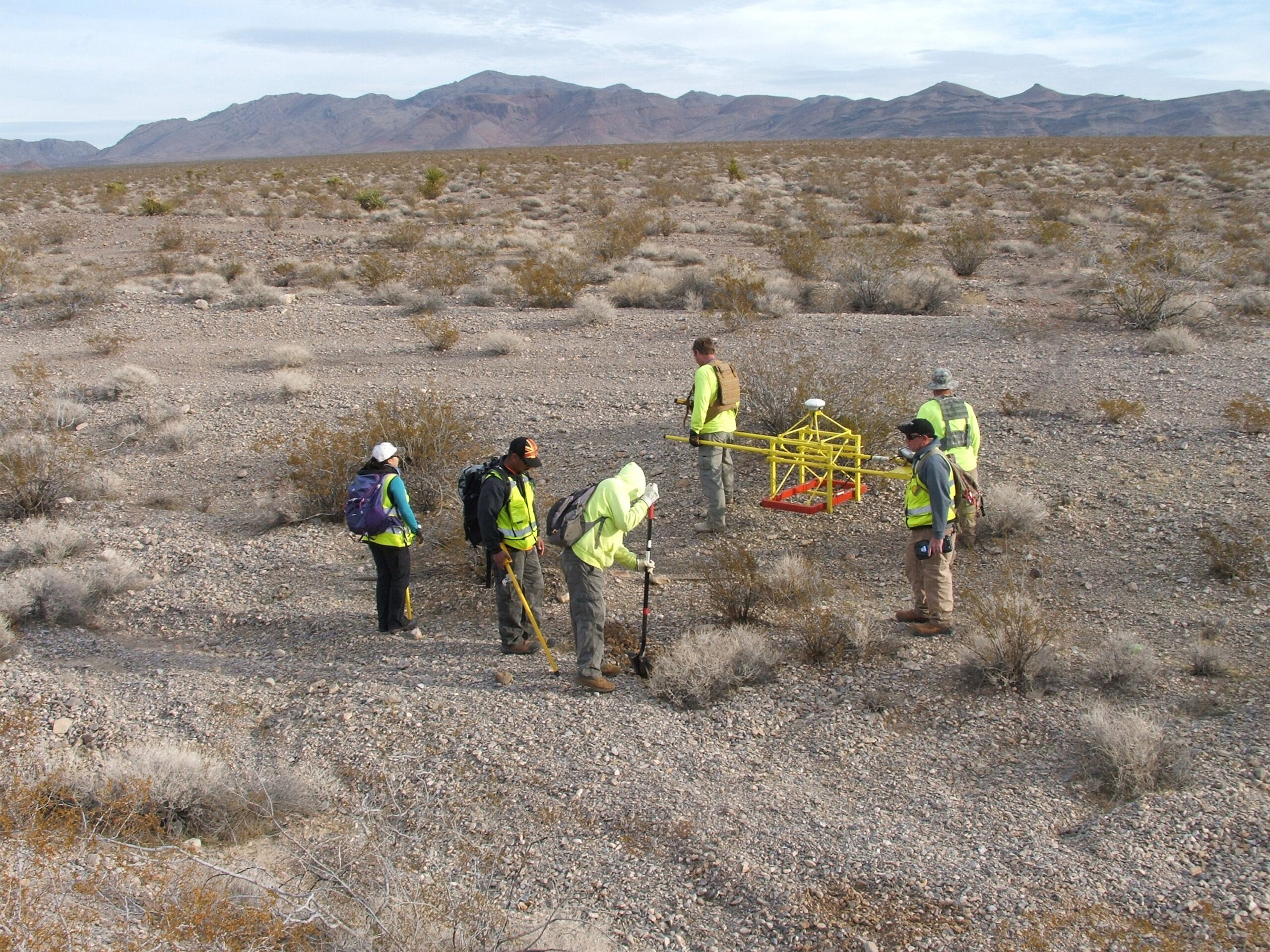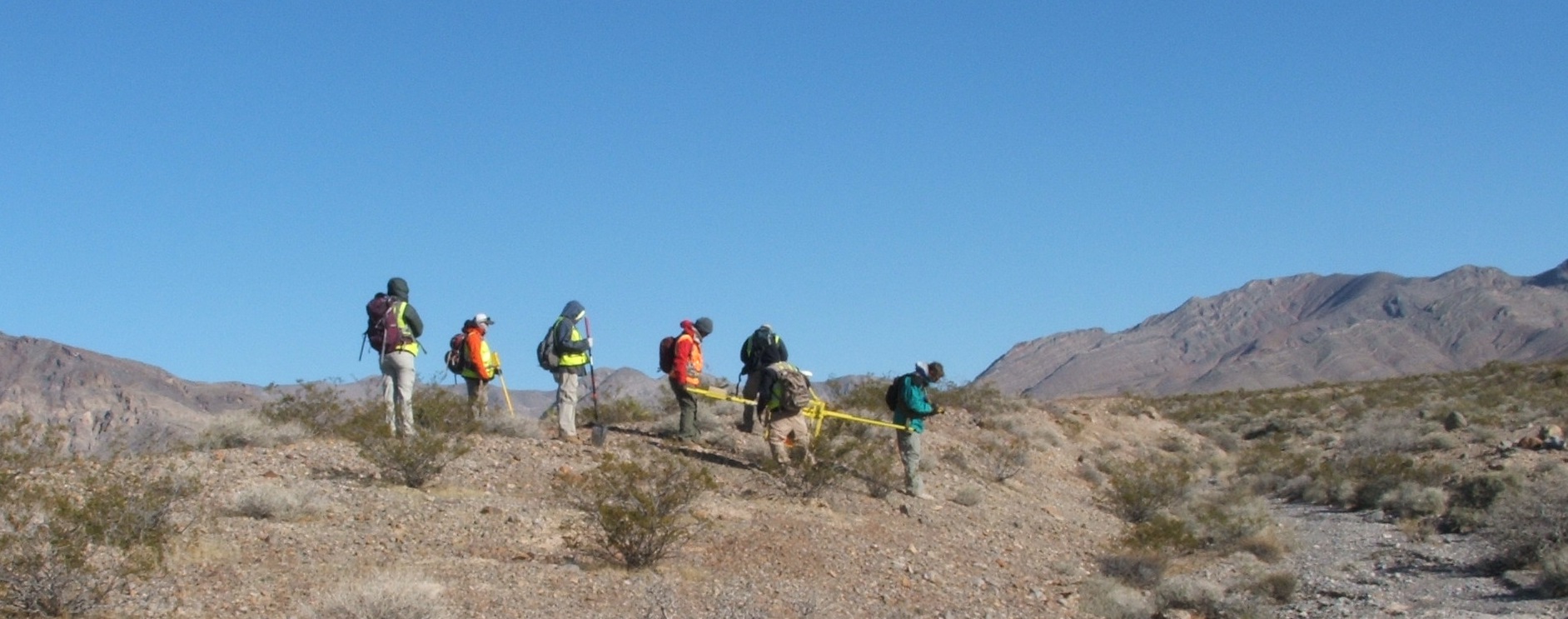UNLV Study Area MRS 02 RI/FS

Description
US Army Corps of Engineers (USACE) Los Angeles District, awarded Bristol this project to complete a Military Munitions Response Program (MMRP) remedial investigation/feasibility study (RI/FS) at the former Nellis Small Arms Range, formerly used defense site (FUDS) (including Burial Areas, Moving Target Area, and Ordnance Jettison Area) on a 2,014-acre munitions response site (MRS) located in Las Vegas, Nevada. Project activities included preparing project plans, performing RI/FS field activities, writing RI/FS reports, and preparing and gaining acceptance of a Proposed Plan and Decision Document.
The 2,014-acre University of Nevada, Las Vegas (UNLV), study area MRS02 was created to address land that is scheduled to be transferred to UNLV. Bristol conducted a remedial investigation to determine the nature and extent of potential Munitions and Explosives of Concern (MEC)/Munitions Constituents (MC), assess the potential risks/hazards to human health and the environment, and evaluate remedial investigation findings to determine if no further action is needed or remedial action alternatives are needed through a FS.
The Bristol team conducted field investigations from November 2017 to March 2018, using light detection and ranging survey (LiDAR) mapping, biological and cultural resource surveys and monitoring; geophysical surveys, MEC field work and MC sampling; and intrusive investigations. In all, the Bristol team completed 90 miles of geophysical surveys resulting in 12,000 geographical anomalies investigated with zero unexploded ordnance (UXO). The Bristol team identified munitions debris (MD) items to include 37mm fragments, 100-pound practice bomb, smoke grenade, heavy case fragments, and jet assisted take-off (JATO) Bottles. All MD was collected and taken to staging area for inspection, certification, and recycling,
In addition to MD, the Bristol team found that lead and antimony exceeded residential and industrial screening criteria in the Moving Target Berm Areas and downrange from the moving target berms. Polycyclic aromatic hydrocarbons (PAHs) also exceeded residential soil screening criteria in the small area where clay target debris were identified. Based on the RI report, remedial action for military munitions was not required and no further action was needed. However, the RI report concluded the higher levels of lead, antimony, and PAHs in the soils on site posed an unacceptable risk and further evaluation was warranted through the FS.
Through the FS process, USACE identified excavation, transportation, and disposal of contaminated soils as the alternative method of choice to ensure protection of human health, welfare, and the environment from actual or threatened releases of hazardous substances.
Community participation is a key element in the Comprehensive Environmental Response, Compensation, and Liability Act (CERCLA) process, and as such USACE and Nevada Division of Environmental Protection (NDEP) provided information regarding the preferred alternatives for the MRS to the public through a public meeting, administrative record file for the site, and announcements published in local newspapers. Once the proposed plan was finalized, Bristol completed the final decision document in March 2020.
UNLV Study Area MRS 02 RI/FS
Client: USACE
Location: Nevada
Award Date: August 2016
completed date: March 2020

Highlights
- Bristol performed an MMRP RI/FS of a 2,014-acre former Nellis Small Arms Range, FUDS MRS02 site in Nevada.
- Project addressed land that is scheduled to be transferred to UNLV
- 90 miles of geophysical surveys
- Investigated 12,000 anomalies with zero UXO
- MD certified as MDAS and recycled
- Feasibility Study conducted for the munitions constituents found in the soils (lead, antimony, and PAH)
- Community relations / opportunities for public comment
- Decision document finalized providing the alternative three (excavation, transportation, and disposal of contaminated soils) as the final method
Highlights
- Bristol performed an MMRP RI/FS of a 2,014-acre former Nellis Small Arms Range, FUDS MRS02 site in Nevada.
- Project addressed land that is scheduled to be transferred to UNLV
- 90 miles of geophysical surveys
- Investigated 12,000 anomalies with zero UXO
- MD certified as MDAS and recycled
- Feasibility Study conducted for the munitions constituents found in the soils (lead, antimony, and PAH)
- Community relations / opportunities for public comment
- Decision document finalized providing the alternative three (excavation, transportation, and disposal of contaminated soils) as the final method

